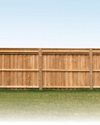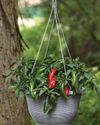
You may already own a jigsaw, but if yours is like mine, it likely has a cord attached. I wanted to find out how cordless models stack up against the corded type I’ve used for years. Using a range of blades and various types of cuts in different materials, I put eight cordless jigsaws through their paces. At the end of this article, I’ll give you a rundown on how they compared with one another.
D-handle or barrel grip?
I’m a devout D-handle guy—no two ways about it. That’s not to say I don’t recognize the benefits of a barrel grip jigsaw; it’s just not for me. And that’s the point. With jigsaws, it really comes down to what is comfortable for you, the size of your hand and how you like to use this tool. A D-handle may be more suitable for smaller hands; holding a barrel grip may cause fatigue. A barrel grip jigsaw might be more awkward to hold for some, but its lower center of gravity will allow for better control. I prefer a D-handle because I can control the blade speed on the trigger. Barrel grip models have just an on/off switch.
Corded or Battery-Powered?
All the tools tested are in the 18- to 24-volt range and cost from $50 to $200. That price range is similar to that of corded models, so the question is: If I’m buying a new jigsaw, why would I choose cordless over corded? I believe the deciding factor should be how the tool will be used. If it will never leave the shop, then I prefer the reliability of corded power without the need to maintain batteries. In the field, on the jobsite or in other situations where I may find myself without a power outlet, then the sweet freedom of battery power is the better choice.
This story is from the {{IssueName}} edition of {{MagazineName}}.
Start your 7-day Magzter GOLD free trial to access thousands of curated premium stories, and 9,000+ magazines and newspapers.
Already a subscriber ? Sign In
This story is from the {{IssueName}} edition of {{MagazineName}}.
Start your 7-day Magzter GOLD free trial to access thousands of curated premium stories, and 9,000+ magazines and newspapers.
Already a subscriber? Sign In

7 Bicycle Maintenance Tips
Keep your bike in tiptop shape and ride safe!

SETTING FENCE POSTS WITH EXPANDING FOAM
Any fence builder knows you need strong posts for a strong fence, and that means backfilling the postholes with a dense, hard material other than dirt.

PEBBLE MOSAIC STEPPING STONES
COLLECT SOME RIVER ROCK AND MAKE YOUR OWN UNIQUE STEPPINGSTONE PATH

EARTH-FRIENDLY WEED KILLERS
HEALTHIER CHOICES FOR HUMANS AND THE ENVIRONMENT

DIY! HYDROPONIC GARDEN
FRESH VEGETABLES AT YOUR FINGERTIPS

GROW MINI VEGETABLES
GROW A GARDEN IN A TINY SPACE!

BUILD A VERTICAL GARDEN
TIME TO GROW UP!

MODERN WATER FOUNTAINS
A SPLASH OF PEACE FOR YOUR PATIO

9 ALTERNATIVE USES FOR SAWDUST
Every fully stocked wood shop has a table saw. You can usually find a pile of sawdust under it, even if it's used only occasionally. If a shop has a belt sander or band saw, there's probably another pile of finer sawdust under that. Even people without stationary tools have sawdust accumulation on their workbenches.

INSULATE WITH FOAM
IT'S A GREAT ALTERNATIVE TO FIBERGLASS